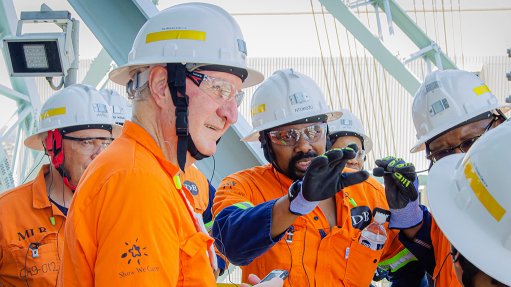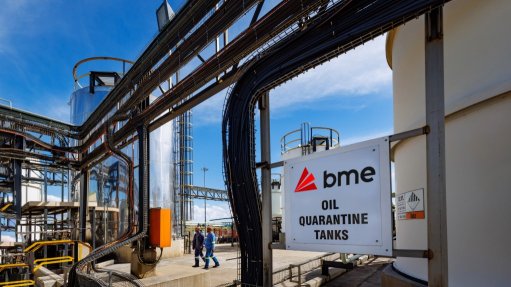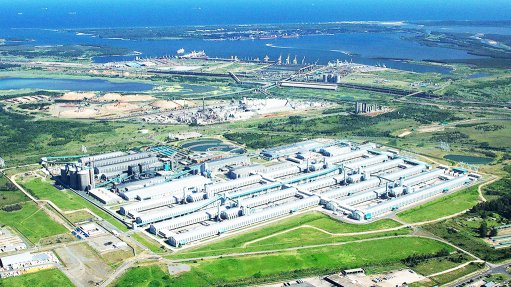Cobalt demand drives illegal trade

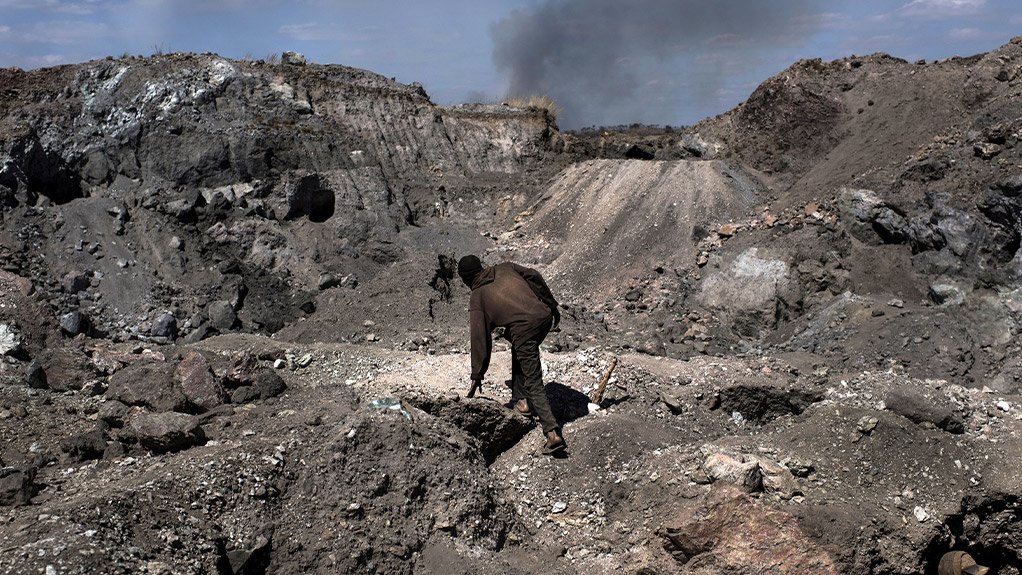
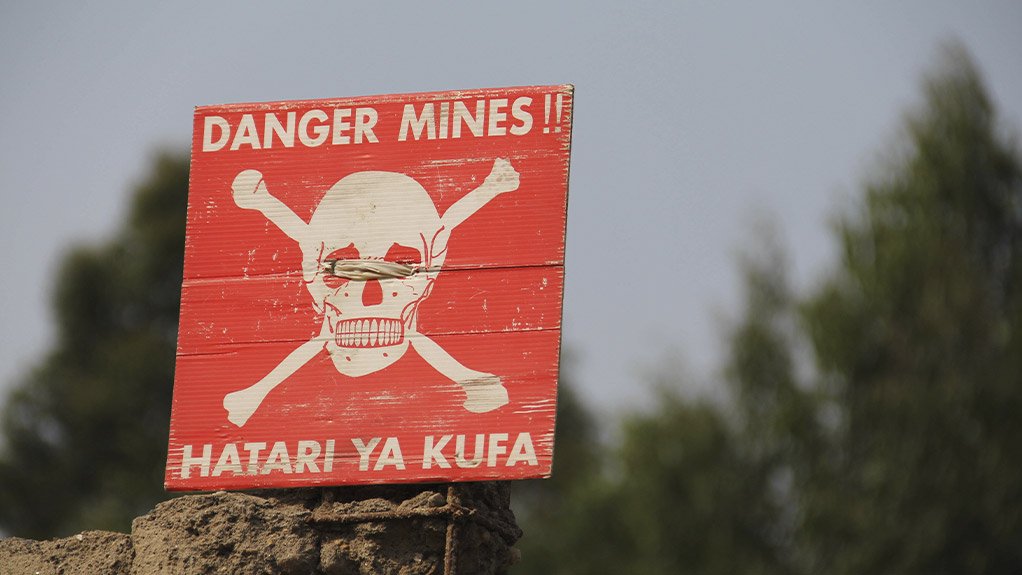
IN THE TRENCHES Dire living and working conditions found in the Democratic Republic of Congo drive the artisanal and illegal mining sector
RISK OF DYING A skull and crossbones with a dire warning written in Swahili warns miners of the risks surrounding mining
Increased global demand for cobalt is spurring mining activity in the Democratic Republic of Congo (DRC), specifically illegal and artisanal operations.
The southern point of the DRC is reported to contain about two-thirds of the world’s natural cobalt reserves.
Although the DRC is the second-largest country in Africa, with extensive natural resources, more than 80% of its people fall within the “extreme poverty threshold” as defined by the United Nations.
Moreover, mining is often the only viable source of income for hundreds of thousands of men, women and children in the country.
The DRC has had to deal with political conflict; a lack of education, medical facilities and infrastructure; pandemics, such as poliomyelitis; and the notable mismanagement of its mining resources.
One of the greatest driving forces behind artisanal mining in the DRC is the lack of entrepreneurial programmes to help uplift micro businesses in the mining and industrial sectors, says global mining operation managers PHNG Consult president Patrick Hickey.
Speaking to Mining Weekly, he says that the artisanal trade of cobalt cannot adequately be controlled or curbed by mining houses or even government, and that this lack of regulation subsequently increases the safety hazards for legal and illegal miners.
Hickey says the line between artisanal and illegal is “very slim” and regulating either one has not been successful to date. However, he does suggest that social programmes by consulting firms and mining houses on the ground have sought to make the artisanal miners safer, albeit under informal employment terms.
“Personal protective equipment, protective clothing, hard hats and mining equipment have been supplied to artisanal miners in the hopes of reducing fatalities and injuries in the pits,” Hickey states.
“All employers, and specifically those involved in high-risk activities, such as mining, should be developing systems to ensure that hazards are identified, risks assessed and control measures implemented,” says law advisory Webber Wentzel partner Kate Collier, noting that this obligation also extends to informal employers in the artisanal sector.
She suggests that the process of developing these systems can often be complicated when there are legislative differences, local legislation has yet to incorporate specific safety requirements or when practical implementation is hindered by challenges such as under-resourced regulators.
Collier adds that, while the DRC has not fully aligned with International Labour Organisation conventions, several of its laws and regulations pertain to occupational health and safety in the workplace.
“At an absolute minimum, employers should comply with these local laws,” she says.
A key focus for larger mine houses operating in the DRC – and several other similar jurisdictions – is the risk to safety of personnel and plant assets caused by illegal or artisanal mining operations.
These operations not only place the integrity of mining operations – including issues pertaining to ground stability – at risk but also present a safety risk in terms of increased levels of intimidation, crime and violence, with reports of armed conflict increasing.
Collier notes that these risks are largely outside the control of any employer but must be considered and mitigated where possible because they may place all other safety and related systems at risk.
She adds that, other than planning for the establishment of reliable sources of information and good relationships on the ground, as well as the introduction of as many security-related precautions as possible, mining houses must also consider potential and ongoing geopolitical risks when assessing a project’s viability.
Further, while the DRC government is taking action against geopolitical threats, the measures implemented are inherently risky, and contribute to volatility and potential violence could occur as a result.
Hickey suggests that the scramble for cobalt in the DRC is similar to gold rushes in Alaska or Canada in that it poses a high mortality rate with the hope for riches yielding little to no actual lucrative earning.
“The artisanal miners are not employable by the mining houses due to lack of skills and education. They would subsequently prefer to take the gamble of mining illegally and selling the cobalt on the black market, as opposed to the comparative stability of working for a reputable mining house.”
Cobalt is used predominantly in lithium-ion batteries, which are components of not only computers and smartphone technologies, but also literally the driving force behind electric vehicles. With large automotive manufacturers, such as Tesla, BMW and Volkswagen investing heavily in cobalt, an increased global awareness of the artisanal and illegal mining industry in the DRC will, in all likelihood, emerge.
“It is hoped that this increased scrutiny will facilitate better oversight and regulation of the resource by the DRC government and mining houses,” concludes Collier.
Article Enquiry
Email Article
Save Article
To advertise email advertising@creamermedia.co.za or click here
Press Office
Announcements
What's On
Subscribe to improve your user experience...
Option 1 (equivalent of R125 a month):
Receive a weekly copy of Creamer Media's Engineering News & Mining Weekly magazine
(print copy for those in South Africa and e-magazine for those outside of South Africa)
Receive daily email newsletters
Access to full search results
Access archive of magazine back copies
Access to Projects in Progress
Access to ONE Research Report of your choice in PDF format
Option 2 (equivalent of R375 a month):
All benefits from Option 1
PLUS
Access to Creamer Media's Research Channel Africa for ALL Research Reports, in PDF format, on various industrial and mining sectors
including Electricity; Water; Energy Transition; Hydrogen; Roads, Rail and Ports; Coal; Gold; Platinum; Battery Metals; etc.
Already a subscriber?
Forgotten your password?
Receive weekly copy of Creamer Media's Engineering News & Mining Weekly magazine (print copy for those in South Africa and e-magazine for those outside of South Africa)
➕
Recieve daily email newsletters
➕
Access to full search results
➕
Access archive of magazine back copies
➕
Access to Projects in Progress
➕
Access to ONE Research Report of your choice in PDF format
RESEARCH CHANNEL AFRICA
R4500 (equivalent of R375 a month)
SUBSCRIBEAll benefits from Option 1
➕
Access to Creamer Media's Research Channel Africa for ALL Research Reports on various industrial and mining sectors, in PDF format, including on:
Electricity
➕
Water
➕
Energy Transition
➕
Hydrogen
➕
Roads, Rail and Ports
➕
Coal
➕
Gold
➕
Platinum
➕
Battery Metals
➕
etc.
Receive all benefits from Option 1 or Option 2 delivered to numerous people at your company
➕
Multiple User names and Passwords for simultaneous log-ins
➕
Intranet integration access to all in your organisation











